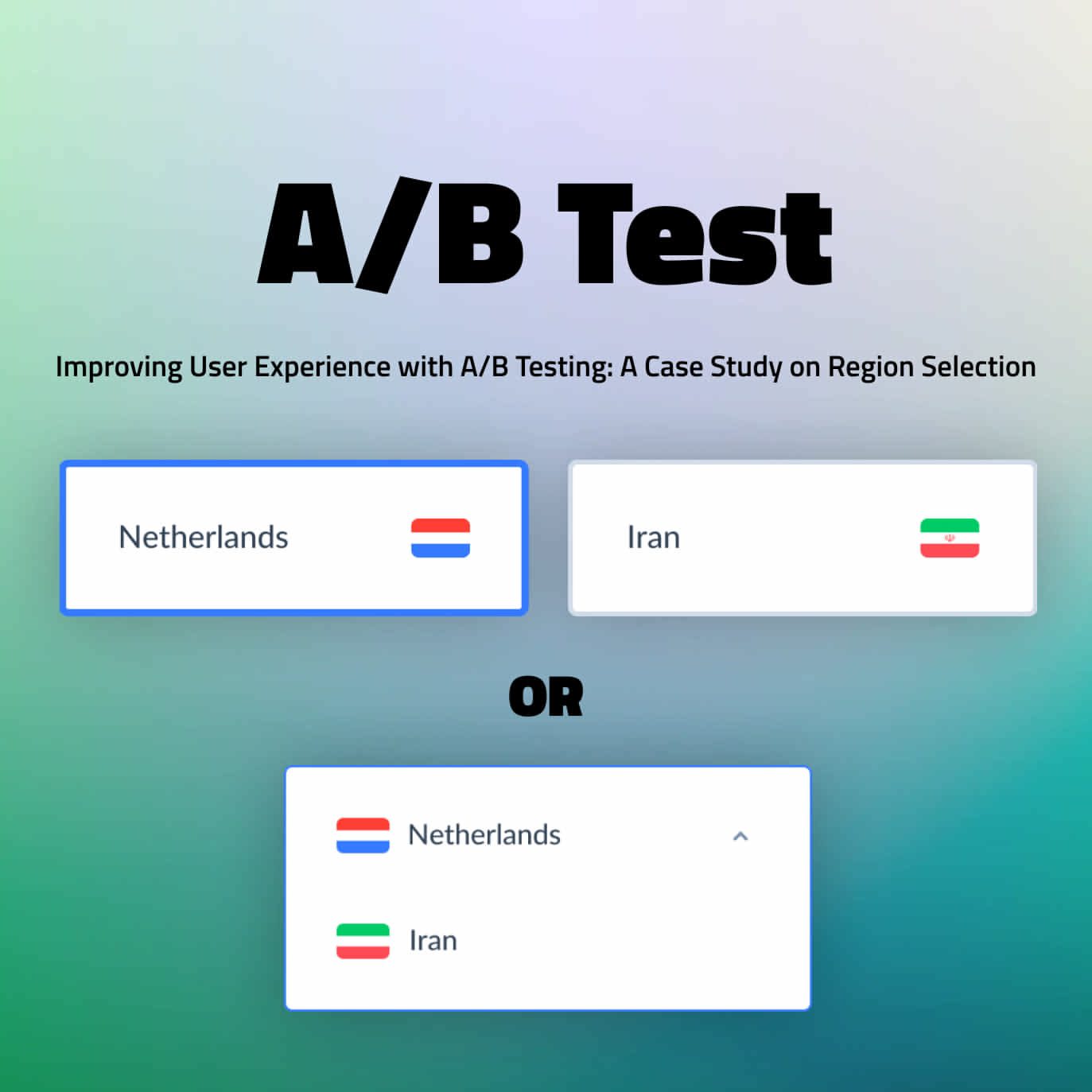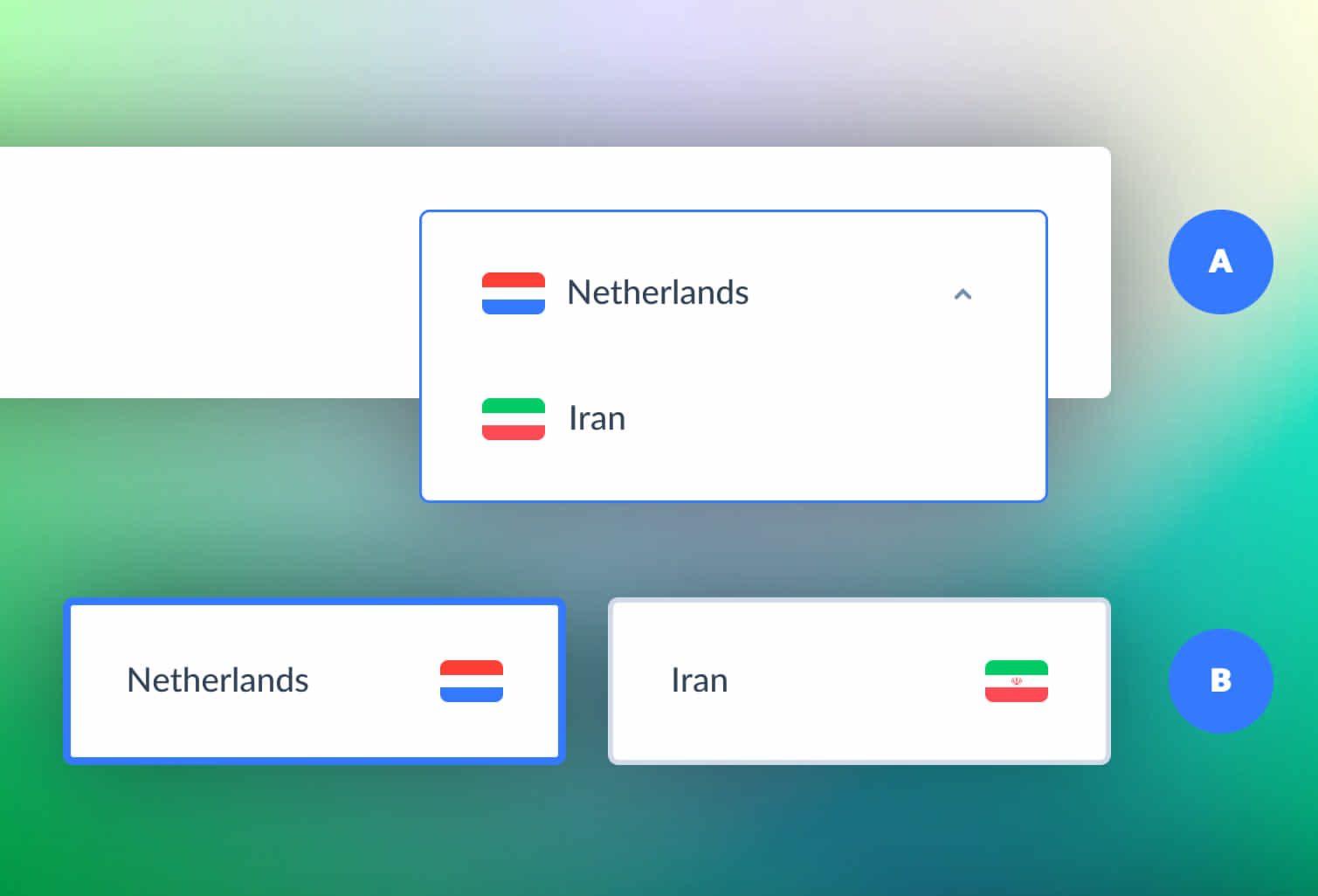

Introduction
As a product designer at a cloud provider company, we recently implemented a new feature in our platform which allows users to easily select and change their region. Since this feature was completely new and not previously provided in the platform, we wanted to ensure that users were able to find it quickly and efficiently. To achieve this, we conducted an A/B test between two different modes of presenting the region selection feature – a tab and a drop-down menu. Our goal was to determine which mode was more effective in helping users find and utilize the region selection feature.
In this case study, we will describe our methodology, results, and the impact of the A/B test on our platform. By conducting this test, we aimed to improve the overall user experience by making it easier and more efficient for users to access and manage their cloud resources.




Methodology
To conduct our A/B test, we randomly assigned users to one of two groups – the control group, which was presented with the region selection feature in a tab format, and the test group, which was presented with the region selection feature in a drop-down menu format.
We chose to test these two formats specifically because they are commonly used in web design and have been shown to be effective in similar scenarios. The tab format is simple and intuitive, allowing users to easily see and access the region selection feature. On the other hand, the drop-down menu format takes up less space on the screen and may be more visually appealing, but may require more clicks or user interaction to access the desired region.
To measure the effectiveness of each format, we tracked the time it took for users to find and select the region they were looking for. We also collected data on the number of clicks and interactions required to complete the task, as well as any user feedback or comments on the ease of use and overall experience.
The A/B test was conducted over a period of two weeks, during which time we gathered data from a sample size of 200 users evenly split between the control and test groups. We then analyzed the data using statistical methods to determine which format was more effective in helping users find and utilize the region selection feature.
In the next section, we will present the results of our A/B test and discuss their implications for our platform.


Results
We collected data from a sample size of 200 users, split evenly between the control and test groups. Our analysis showed that 71% of users interacted more with the tab mode, while only 29% of users interacted more with the drop-down menu mode.
Furthermore, users in the tab mode group were able to find and select their desired region more quickly and with fewer clicks than users in the drop-down menu group. Specifically, users in the tab mode group took an average of 5 seconds to complete the task, while users in the drop-down menu group took an average of 8 seconds to complete the same task. Users in the tab mode group also required an average of 1 clicks to select their desired region, while users in the drop-down menu group required an average of 2 clicks.
Overall, these results suggest that the tab mode is more effective in helping users find and utilize the region selection feature than the drop-down menu mode. The Tab mode is more intuitive and requires less user interaction, allowing users to quickly and easily select their desired region without any confusion or frustration.
In the next section, we will discuss the impact of these findings on our platform and the user experience.
Drop down
Conversion rate
0%8 Seconds
2 Click
Tab
Conversion rate
0%5 Seconds
1 Click
Impact
Based on the results of our A/B test, we implemented the tab mode as the default mode for presenting the region selection feature in our platform. This resulted in an improved user experience, making it easier and more efficient for users to access and manage their cloud resources.
The Tab mode was more intuitive and required less user interaction, resulting in a faster and more streamlined user experience. This had the potential to improve user satisfaction, retention, and engagement on our platform.
Furthermore, the A/B test provided valuable insights into the preferences and behavior of our users, which could be used to inform future design decisions and feature implementations, allowing us to continue to improve the user experience on our platform.
In conclusion, the A/B test conducted to compare the tab and drop-down modes for presenting the region selection feature helped us identify the more effective mode and improve the user experience on our platform. We used data-driven decision-making to inform our design decisions and will continue to do so to make improvements in the future.
Conclusion
The A/B test conducted to compare the tab and drop-down modes for presenting the region selection feature provided valuable insights into the behavior and preferences of our users. By comparing the two modes, we were able to identify the tab mode as the more effective and efficient mode for presenting this feature.
The implementation of the tab mode led to an improved user experience, making it easier and more intuitive for users to access and manage their cloud resources. This not only increased user satisfaction but also had the potential to improve user retention and engagement on our platform.
Our use of A/B testing and data-driven decision making allowed us to gather user feedback and make informed design decisions, which ultimately led to an improved product. Going forward, we will continue to use A/B testing and other research methods to gather feedback from our users and make data-driven decisions to improve our product.
Overall, this A/B test provided a valuable case study for how to make data-driven decisions in product design and development. By comparing different design options and measuring user behavior, we can identify the most effective design solutions that meet the needs and preferences of our users.

